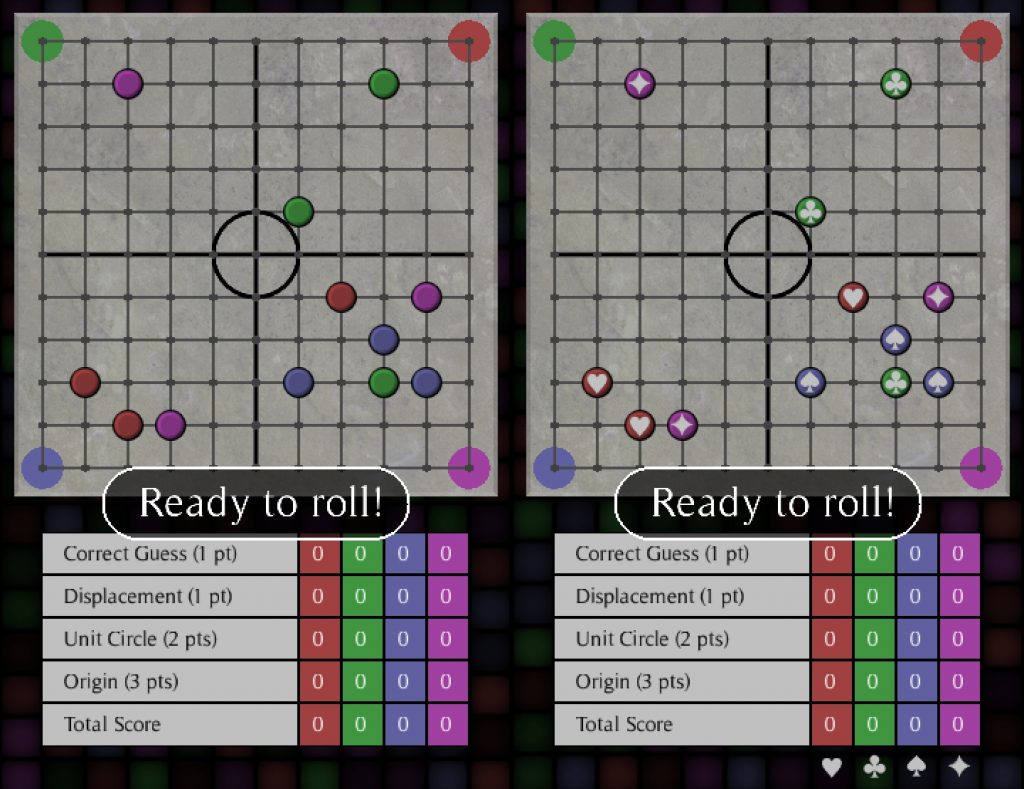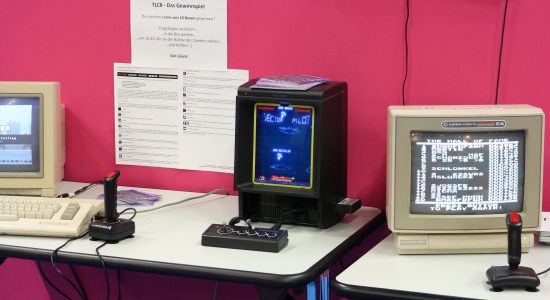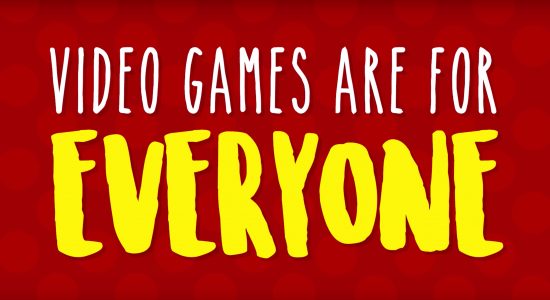Interview with Andrew Krause, creator of Cartesia
In this series we talk to creators that include the colorblind in their products. Send us a message if you’re interested in participating!
Can you tell us a bit about yourself?
I’m the programmer (and sometimes game designer, artist and musician) for Alien Bug Games. We’re not a proper full-time development house but rather an imprint that I use to release my hobbyist stuff, and I often collaborate with other designers, artists, and musicians.
We recently released Cartesia for Android phones and tablets. It’s a four play board game of luck and strategy. Each player is represented by three pieces of the same color and take turns rolling dice to move to the center of the board.
Why did you decide to include a color blindness mode in your game?
Back in 2005 I participated in a video game contest where the object was to spend a week creating a game that only used one button.
This was prior to the advent of smart phones and the ubiquity of one-touch mobile games. The contest was co-sponsored by Oneswitch which is a non-profit that promotes input accessibility for people with physical disabilities.
My team ended up creating an autorunner (pre Canabalt!) and tied for first place. I had released some small things on BBSs before but I think this was the first thing I put on the web proper. The founder of Oneswitch wrote me that his daughter really enjoyed our game. It was really validating to know that my art was able touch someone so far away and bring some joy into their life.
It was the combination of those two things that really cemented accessibility in my mind: knowing that I could reach people, and the awareness that Oneswitch gave me. Ever since that experience I’ve tried to keep accessibility in mind while designing things, and since Cartesia relies so heavily on color, I wanted to build in a colorblind accessibility mode so everyone could be included.
Games are ultimately about bringing people together in the spirit of play, and being as inclusive as possible ties right into that.
How did you go about creating the color blindness mode?
I did some research and found the colorblind episode of Mark Brown’s excellent Game Maker’s Toolkit series. That inspired me to distinguish the players’ colors with symbols. I experimented with a few different sets of symbols such as simple geometric shapes like circles, squares, and triangles.
I considered supporting multiple color schemes but couldn’t land on anything that really seemed to work. I was mainly concerned about the game functioning properly for each specific type of color blindness. I considered different levels of grey but that just seemed boring.

I ended up going with the four playing cards suits because it not only read better, but I felt like it complemented the other classic gameplay elements that were present (physical board games, rolling dice, etc)
Many thanks to Andrew for this interview! You can download Cartesia from the Google Play Store.
Send us a message if you’re interested in participating in this series.


